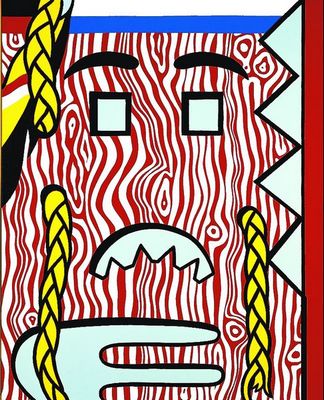Artists' motives were good, but methods offended tribes, curator says
Yet at different points in their careers, both used Western themes as the basis for their artwork. Lichtenstein did it twice, first in the 1950s and again in the 1970s. Warhol did it in the late '70s and early '80s.
Works of both are featured in a pair of exhibitions opening at the Eiteljorg Museum on Saturday--"Roy Lichtenstein: American Indian Encounters" and "Andy Warhol's Cowboys and Indians."
The irony, Complo-McNutt said, is that both artists were trying to highlight the fact that American popular culture was guilty of misappropriation and misrepresentation of native cultures, leading to the stereotypes of Indians that were predominant in films, TV shows and Western novels.
"I don't think that anything Lichtenstein and Warhol did was intentionally offensive," Complo-McNutt said. "They were making genuine efforts to try to understand and correct past misrepresentations of Native Americans."
I'll have to see the show, but I don't think it's wrong to appropriate cultural symbols such as these. Perhaps the curator is talking about more sacred symbols.
Which reminds me to remind you: I'll be attending these exhibitions as part of a "Native Americans in comics" program on March 10. Be there or be square!


2 comments:
Rob, I'm Canadian, and here, some of our most celebrated artists were deeply inspired by the First Nation communities they moved through. Consider Emily Carr and her legacy as an artist and medium through which the Indian cultures found a most loving heart and soul to speak through in art. The "Group of Seven" of which she was a member, were the crown jewel of Canadian art and I believe that art is a personal voyage. But then again, in Canada, I believe it's different than the States...but that's another story for another time. Enjoy the show Rob...
http://en.wikipedia.org/wiki/Emily_Carr
Since I'm a non-Native who produces Native-themed comic books, I'm the last one to say non-Natives shouldn't use Native images or symbols. But if they do so, they should do it with care and sensitivity. Some people meet that standard...and then there are others, such as Mel Gibson and the creators of Zagar and Steve.
Post a Comment